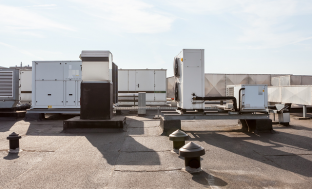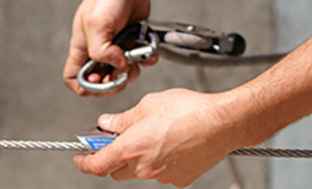latest news
Is your ladder safe to use?

Ladders are a vital part of many work at height tasks, but also contribute to a large percentage of work at height injury statistics.
In general, ladders are best used when a risk assessment has shown that using equipment offering a higher level of fall protection is not justified because of the low risk and short duration of use, or when there are existing workplace features which cannot be altered.
Ladders should only be utilised in situations where they can be used safely, such as where the ladder will be level and stable, and where it is reasonably practicable to do so, the ladder can be secured.
If these general rules are followed, you are unlikely to run into trouble when using ladders, however, there is another important factor to remember: proper inspection and maintenance of your ladder.
A ladder that is not inspected and deemed fit for use regularly can lead to serious problems for the unlucky soul who uses it. However, by following a few simple inspection guidelines, you can make sure that your ladders are safe to use.
Ladder inspection guidelines
A detailed visual inspection should be carried out regularly by a competent person. You can usually find these inspections outlined in the manufacturer’s instruction manual.
Before each use, comprehensive pre-use checks should be performed, and these should be repeated every time something changes, such as when the ladder is dropped or moved.
Generally, you should:
If your ladder fails any of these checks, take it out of use immediately, and notify your employer or health and safety supervisor.
- Check the stiles – ensure they are not bent or damaged, as this could cause the ladder to buckle or collapse.
- Check the feet – missing, worn or damaged feet might cause the ladder to slip. You should also check ladder feet when moving from soft/dirty ground, like dug soil, loose sand, or stone, to a harder surface such as paving slabs, to make sure the foot is making contact with the ground and not hampered by dirt or stone chips.
- Check the rungs – if they are bent, worn, missing or loose the ladder could fail.
- Check locking mechanisms – bent or worn mechanisms or fixings could lead to collapse.
- Make sure any locking bars are engaged.
- If it is a stepladder, check the top platform is not split or buckled, as this will lead to instability.
- You should also check the steps or treads on stepladders. If they are coated with dirt or wet they could be slippery; if the fixings are loose on steps, they could collapse.
Ladders are for the most part incredibly safe and straightforward, but misuse or a lax attitude to maintenance can lead to serious injury or worse.
For more information about ladder inspection, or inspection and recertification of any fall protection or safe access equipment, call Roof Edge on 0141 949 1014 or use our online contact form.





